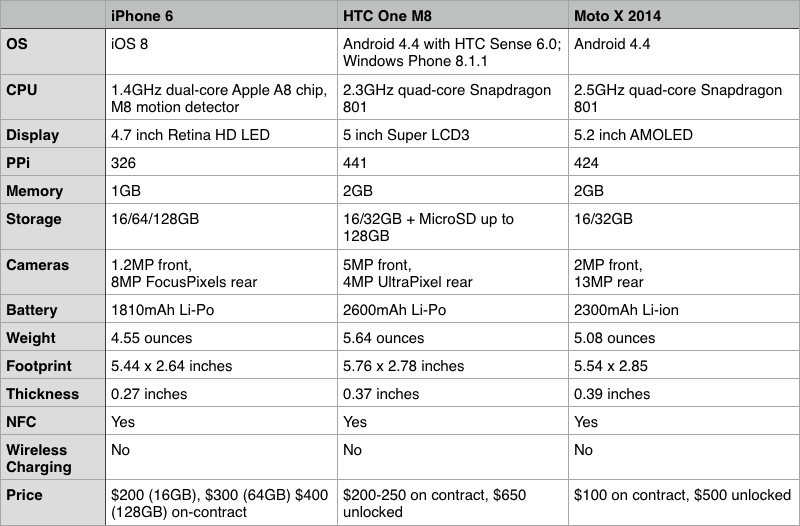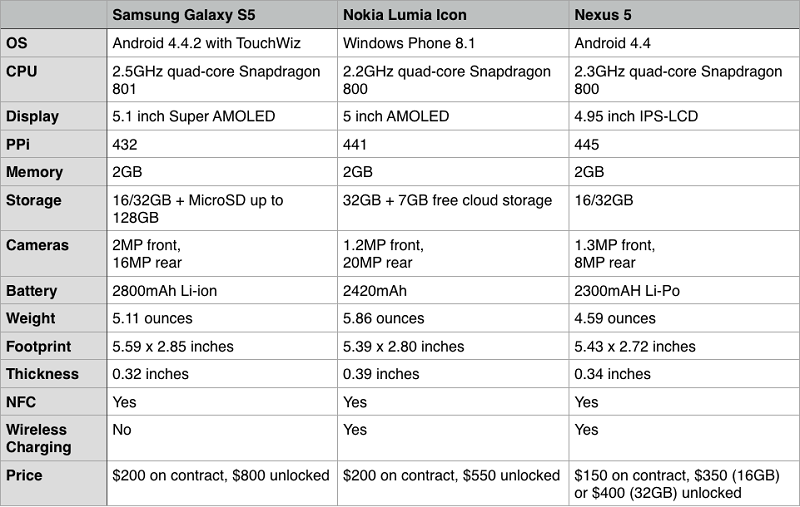
As was expected, Apple revealed the next generation of iPhones on September 9, 2014, respectively, the 4.7-inch iPhone 6, and the 5.5-inch iPhone 6 Plus. The new phones sport resolutions of 1334 x 750 and 1920 x 1080, marking this occasion as the first iPhone reveal to feature two distinctly sized phones.
Phil Schiller, Apple’s senior vice president of worldwide marketing, claims the iPhone 6 features over 1 million pixels, while the iPhone 6 Plus tops 2 million pixels.
Exterior
The new iPhones’ exterior feature several design changes from the previous generation: the corners are rounded, harkening back to the earlier design of the iPhone 3; the iPhone 5’s anodized aluminum and glass panels have been replaced with an anodized aluminum case; and the glass front curves around the sides. The 5.5-inch iPhone 6 Plus will also feature a new split-pane view when held in landscape mode, similar to the iPad Mini.

Processor
Internally, a new A8 CPU replaces the iPhone 5’s A7 and provides a 17% increase in processing performance and a 20% increase in graphics performance. Putting this hardware to the test during an on-stage game demo, developer Super Evil Megacorp showcased their upcoming game Vainglory running at a stable 60 frames per second.
Camera
The iPhone 6 will include software-based image stabilization to complement its 8 megapixel camera, whereas the robust size of iPhone 6 Plus allowed the inclusion of additional built-in optical image stabilization. This is the first time an iPhone device will have lenses producing from the back of the device.
NFC
Another feature rumored – and now confirmed – to be included in the phones is near-field communication (NFC) tech intended to perpetuate a PayPal-touch like service called Apple Pay, which allows users to pay for goods using the phone itself by storing credit/debit card information in the chip.
Cost
Pricing options for the phones vary depending on the size of the hard-drive. With a two year contract, a 16 GB iPhone 6 will cost $199, 64 GB will cost $299, and the 128 GB will cost $399. The iPhone 6 Plus is priced at $299 (16GB), $399 (64GB) and $499 (128GB). There is no mention of whether of storage space can be expanded with micro SD cards.
Competition comparison
All in all, the phones are competitively priced, however, not revolutionary from a hardware perspective. For a company who once set the standard on smartphones, Apple is seemingly playing catch-up. My 2012 Samsung Galaxy Note 2 is also 5.5-inches.
The charts below paint a detailed picture of how the iPhone 6’s hardware stacks against its competition: HTC One M8, Moto X 2014, Samsung Galaxy S5, Nokie Lumia Icon, and Nexus 5. What immediately catches the eye is the fact that iPhone 6 is the only flagship phone to have 1 GB of memory in 2014; the five other phones have 2 GB. Similarly, iPhone 6 features a dual-core 1.4 GHz CPU whereas every other major phone is a quad-core, ranging between 2.2 GHz and 2.5 GHz. Furthermore, the pixel per inch density is 326, whereas its competitors are above 420. Meaning, the iPhone 6’s screen is not a “retina-display.”


Charts courtesy of Gizmodo
Ultimately, some will love it, others will hate it. Hardware enthusiasts, such as me, will cry wolf, while fans will praise the phone’s usability.
Via Apple
Advertisement
Learn more about Electronic Products Magazine





